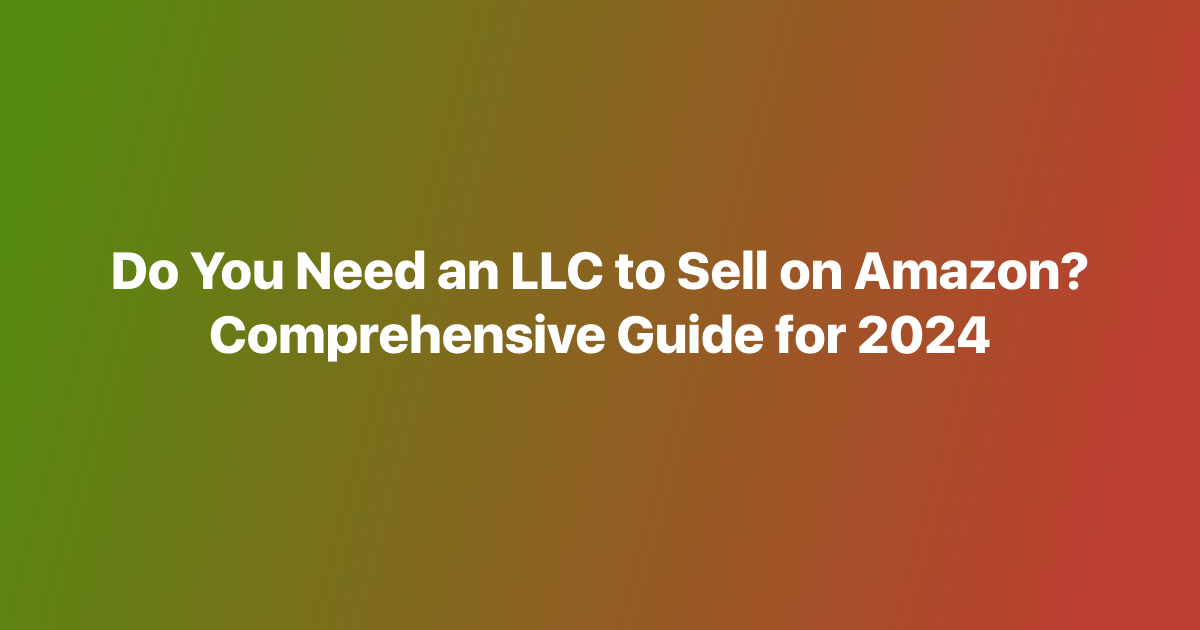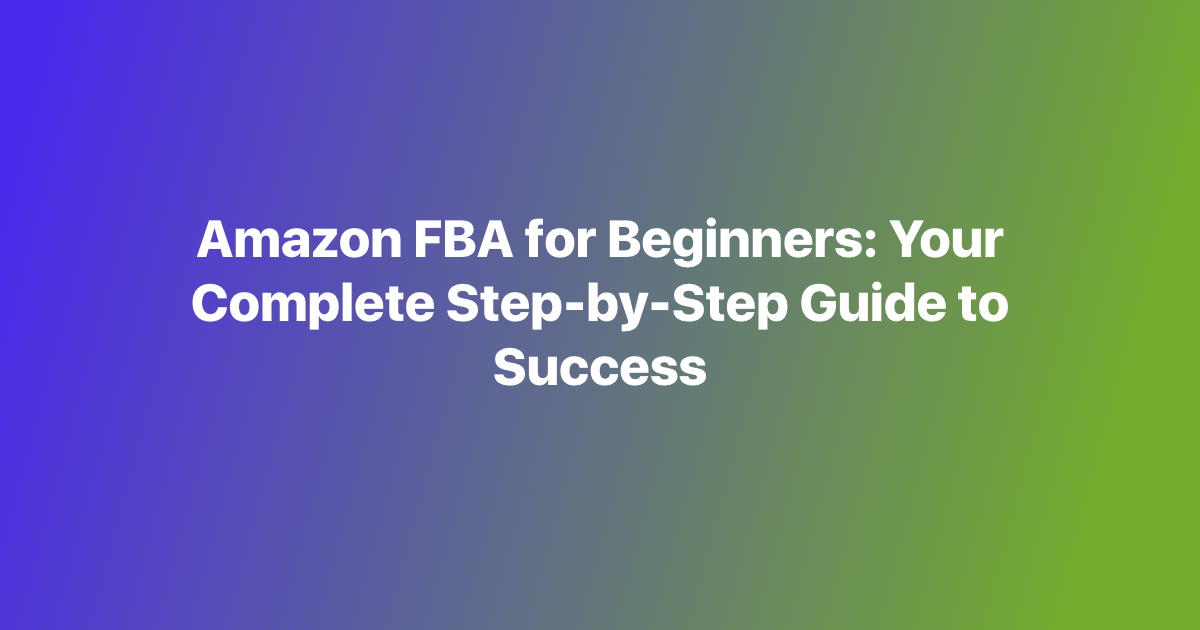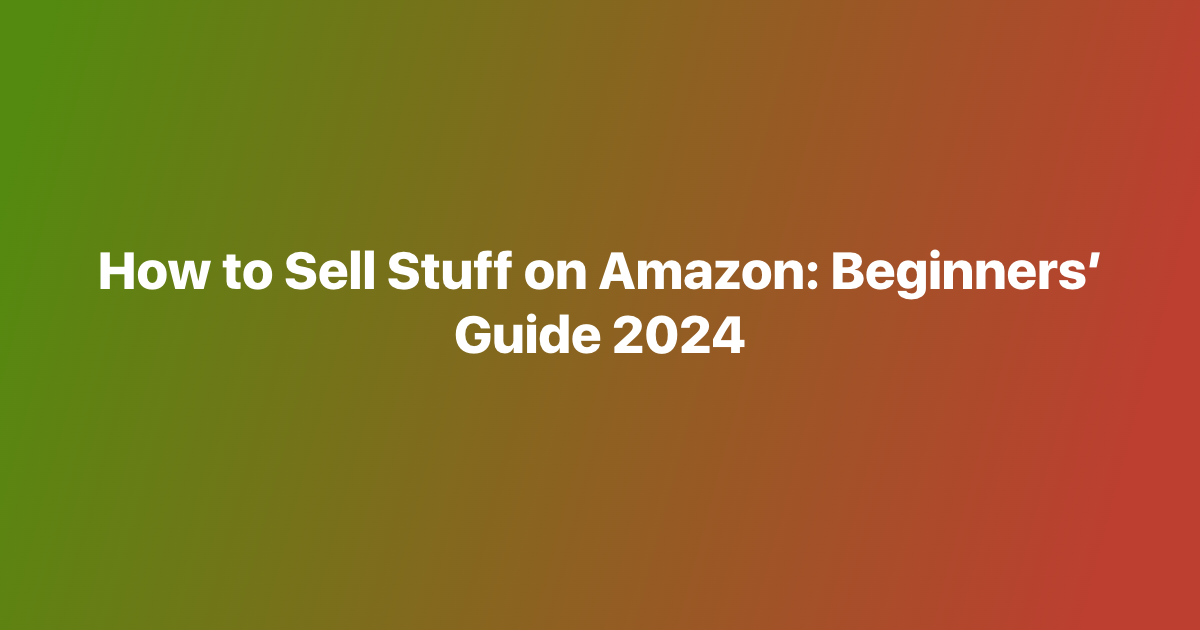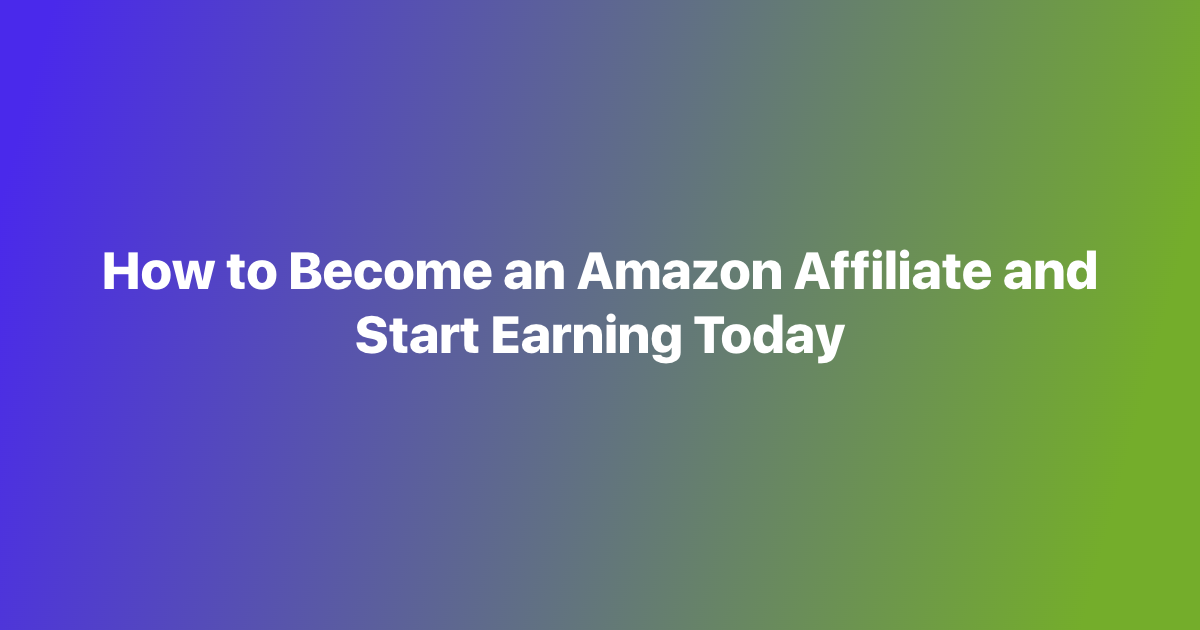The Best Amazon Influencer Storefront Examples to Emulate
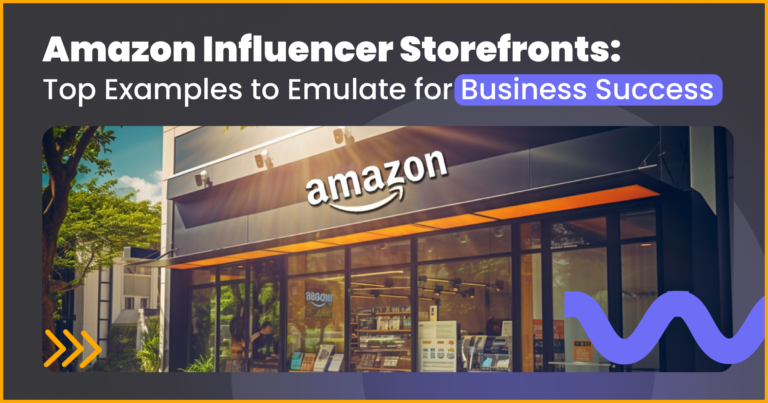
The Role of Influencer Stores on Amazon
In the dynamic world of e-commerce, Amazon Influencer Storefronts have emerged as powerful tools for driving sales and building brand loyalty. These storefronts, curated by influencers, serve as personalized shopping destinations where followers can discover and purchase products recommended by trusted voices. For medium and large business owners, leveraging influencer storefronts can translate into substantial revenue growth and enhanced brand visibility. Influencers bring a unique blend of credibility and reach, creating authentic connections with consumers that traditional advertising often struggles to achieve.
Why is it Important to Study Successful Examples?
Understanding and analyzing successful Amazon Influencer Storefronts is crucial for businesses aiming to tap into this lucrative marketing channel. By studying these examples, business owners can glean insights into effective strategies for product presentation, branding, and customer engagement. These storefronts often employ innovative tactics to attract and retain customers, such as compelling product descriptions, high-quality imagery, and seamless user experiences. Emulating these best practices can help businesses create their own standout storefronts, driving higher conversion rates and fostering long-term customer loyalty. Moreover, successful influencer storefronts can provide valuable lessons in building strategic partnerships with influencers, ultimately amplifying a brand’s reach and impact in the competitive Amazon marketplace.
Interactive Approach to Content
Creating Engaging Content
Creating engaging content is the cornerstone of a successful Amazon Influencer Storefront. For medium and large businesses, it’s not just about listing products; it’s about telling a story that resonates with potential customers. Influencers excel at crafting narratives that showcase products in real-life scenarios, making them more relatable and desirable. High-quality photos, detailed reviews, and compelling video content are essential elements. Videos, in particular, offer a dynamic way to demonstrate product features and benefits, providing a richer, more informative shopping experience. Influencers often include personal anecdotes and testimonials, adding authenticity and trustworthiness to their recommendations. By investing in top-notch content, businesses can create a captivating storefront that draws in and retains customers.
Interactive Elements in Influencer Stores
Interactive elements are key to transforming a standard storefront into an immersive shopping experience. Successful influencer storefronts incorporate features that actively engage visitors, making the shopping process more enjoyable and memorable. For instance, clickable product images that lead to detailed descriptions or user-generated content like customer reviews and ratings can significantly enhance the browsing experience. Live Q&A sessions, where influencers answer follower questions in real-time, create a sense of community and immediacy, driving higher engagement levels. Interactive polls and quizzes can help customers find the products that best suit their needs, providing a personalized shopping journey. Additionally, integrating social media feeds allows for real-time updates and a continuous stream of fresh content, keeping the storefront dynamic and relevant. By adopting these interactive strategies, businesses can boost customer interaction, increase dwell time on their storefronts, and ultimately drive higher conversion rates.
Promotion through Social Media
Using Social Platforms to Attract Attention to the Store
Leveraging social media is a powerful way to draw attention to an Amazon Influencer Storefront. For medium and large business owners, utilizing the vast reach of social platforms can significantly boost visibility and drive traffic to their storefronts. Influencers play a pivotal role in this strategy, using their established social media presence to promote products and storefronts to a large, engaged audience. Effective tactics include posting compelling content such as product unboxings, tutorials, and behind-the-scenes glimpses that pique interest and encourage followers to visit the storefront. Paid promotions and sponsored posts can further amplify reach, targeting specific demographics likely to be interested in the products. By creating a cohesive and consistent brand message across all social channels, businesses can build strong brand recognition and foster trust among potential customers, ultimately driving higher conversion rates.
Examples of Successful Integration of Amazon with Social Media
Several influencers and brands have successfully integrated their Amazon storefronts with social media, setting benchmarks for others to follow. For example, fitness influencer Kayla Itsines uses her Instagram platform to showcase workout gear and supplements available on her Amazon storefront. By sharing workout routines and tips, she seamlessly integrates product promotions, driving her followers to make purchases. Another example is tech reviewer Marques Brownlee, who utilizes YouTube to create detailed product reviews and unboxings. His in-depth, high-quality videos link directly to his Amazon storefront, providing a convenient shopping experience for his viewers.
Fashion influencer Aimee Song effectively combines her blog, Song of Style, with her Amazon storefront by curating seasonal fashion picks and sharing styling tips through her blog and Instagram posts. Her followers are drawn to her Amazon page to shop the curated collections, inspired by her personal style. These examples illustrate the power of a well-executed social media strategy in driving traffic to Amazon storefronts. By studying these successful integrations, businesses can develop their own effective strategies, maximizing the potential of social media to enhance their Amazon presence and boost sales.
Unique Offers and Cooperation
Why Uniqueness is Important to Attract Customers
In a competitive marketplace like Amazon, standing out is crucial. Unique offers and exclusive collaborations can be powerful tools for attracting and retaining customers. For medium and large businesses, offering something distinct and special can differentiate their storefronts from countless others. Unique products, limited-edition items, and exclusive bundles curated by influencers add a sense of scarcity and urgency, encouraging immediate purchases. Additionally, personalized recommendations and unique content tailored to the influencer’s audience can create a more engaging shopping experience. This not only drives sales but also builds brand loyalty as customers are more likely to return for exclusive deals they can’t find elsewhere. In essence, uniqueness fosters a deeper connection with customers, making them feel valued and special.

Examples of Influencer Collaborations with Brands on Amazon
Influencer collaborations with brands on Amazon have proven to be highly successful, showcasing the potential of strategic partnerships. For instance, beauty influencer Huda Kattan collaborated with various beauty brands to create exclusive makeup sets available only on her Amazon storefront. These collaborations included unique packaging and products not available elsewhere, driving significant traffic and sales.
In the tech sector, influencer Linus Sebastian from Linus Tech Tips has partnered with tech companies to offer exclusive hardware bundles and early access to new products. These collaborations often feature special pricing and added value, such as bundled accessories or extended warranties, making them highly attractive to his followers.
Fashion influencer Chiara Ferragni has also made waves with her Amazon collaborations, offering limited-edition clothing lines and accessories through her storefront. By promoting these exclusive items on her social media channels, she creates a buzz and drives her followers to make purchases.
These examples highlight how effective influencer collaborations can be in creating unique offers that attract customers. By partnering with influencers to develop exclusive products and promotions, businesses can leverage the influencer’s credibility and reach to enhance their brand’s appeal and drive significant sales on Amazon.
User Experience and Shopping Convenience
Creating a Platform that is User-Friendly and Easy to Navigate
For medium and large business owners, ensuring that their Amazon Influencer Storefront is user-friendly and easy to navigate is paramount. A seamless shopping experience can significantly impact customer satisfaction and conversion rates. Here are some key elements to consider:
- Intuitive Layout: Ensure that the storefront is organized logically, with clear categories and subcategories that make it easy for customers to find what they’re looking for.
- Search Functionality: Implement a robust search feature that allows users to quickly locate specific products or brands within the storefront.
- High-Quality Images and Videos: Use high-resolution images and engaging videos that provide detailed views of the products, helping customers make informed decisions.
- Clear and Concise Descriptions: Provide detailed yet concise product descriptions, highlighting key features, benefits, and unique selling points.
- Customer Reviews and Ratings: Display customer reviews and ratings prominently to build trust and provide social proof.
- Responsive Design: Ensure that the storefront is mobile-friendly, offering a seamless experience across all devices.
- Fast Loading Times: Optimize the storefront for fast loading times to prevent customer frustration and potential loss of sales.
Examples of Successful User Experiences in Influencer Stores on Amazon
Several influencers have mastered the art of creating user-friendly and engaging storefronts. Here are a few notable examples:
- Marianna Hewitt’s Beauty Storefront: Marianna Hewitt’s Amazon storefront is a model of organization and aesthetics. It features clearly defined beauty categories, high-quality product images, and detailed descriptions. The use of video tutorials and customer reviews enhances the shopping experience, making it easy for customers to find and trust the products.
- Nick Lachey’s Fitness Storefront: Nick Lachey’s fitness-focused storefront is designed for ease of navigation. Products are grouped by fitness goals, such as weight loss, muscle building, and general wellness. The inclusion of workout videos, detailed product information, and customer testimonials makes it a comprehensive resource for fitness enthusiasts.
- Grace Atwood’s Fashion Storefront: Grace Atwood’s storefront excels in providing a seamless shopping experience. The fashion items are neatly categorized by season and style, with high-resolution images and styling tips. The integration of Instagram feeds showing the products in real-life settings adds a personal touch and inspires customers.
- Marques Brownlee’s Tech Storefront: Marques Brownlee’s tech storefront stands out for its intuitive layout and detailed product reviews. Each product listing includes comprehensive descriptions, high-quality images, and video reviews. The storefront is also mobile-friendly, ensuring a smooth shopping experience on any device.
These examples demonstrate how a well-designed and user-friendly Amazon Influencer Storefront can enhance the shopping experience, making it easier for customers to find, trust, and purchase products. By emulating these successful strategies, businesses can create storefronts that not only attract but also retain customers, driving higher sales and long-term loyalty.
Pricing Strategy and Promotions
What Pricing Strategies Work Best on Amazon
Choosing the right pricing strategy is essential for success on Amazon, especially for medium and large businesses aiming to maximize their conversion rates and profitability. Here are some effective pricing strategies that work well on Amazon:
- Competitive Pricing: Analyzing and setting prices competitively compared to similar products can help attract price-sensitive customers and drive more sales.
- Dynamic Pricing: Implementing dynamic pricing allows businesses to automatically adjust prices based on market demand, competitor pricing, and other factors, ensuring optimal pricing at all times.
- Bundling: Offering product bundles at a slight discount can increase the perceived value and encourage customers to purchase more items together.
- Tiered Pricing: Providing tiered pricing options for different quantities or variations of a product can appeal to a broader range of customers, from budget-conscious buyers to those willing to pay more for premium options.
- Discounts and Coupons: Offering periodic discounts, coupons, and limited-time offers can create a sense of urgency and incentivize purchases.
- Subscription Pricing: For consumable or repeat-purchase items, offering subscription pricing with a discount for regular deliveries can foster customer loyalty and steady revenue.

Examples of Successful Promotions and Special Offers from Influencer Stores
Several influencers have successfully leveraged promotions and special offers to drive traffic and boost sales on their Amazon storefronts. Here are a few notable examples:
- Jeffree Star’s Beauty Store: Jeffree Star often runs limited-time promotions on its beauty products, offering exclusive discounts and bundles during special events like product launches or holidays. These promotions create excitement and urgency among his followers, leading to a spike in sales.
- Ben Greenfield’s Health and Wellness Store: Ben Greenfield uses dynamic pricing and tiered discounts to appeal to his health-conscious audience. He frequently offers bulk purchase discounts on supplements and wellness products, encouraging customers to buy larger quantities at a lower price per unit.
- Emma Chamberlain’s Lifestyle Store: Emma Chamberlain’s Amazon storefront features seasonal sales and exclusive offers. She collaborates with brands to create limited-edition products and bundles that are available only for a short period. These promotions are heavily advertised on her social media platforms, driving significant traffic to her store.
- Linus Sebastian’s Tech Store: Linus Sebastian, known for his tech reviews, often offers special promotions on new tech gadgets and accessories. He collaborates with tech brands to provide exclusive early access deals and discounts to his followers, making his storefront a go-to destination for tech enthusiasts looking for the latest products at great prices.
These examples highlight how strategic pricing and well-timed promotions can effectively boost visibility and sales on Amazon Influencer Storefronts. By adopting similar strategies, businesses can attract more customers, increase conversion rates, and enhance overall profitability.
Conclusion
Wrapping Up: Key Principles for Successful Amazon Influencer Stores
Creating a successful Amazon Influencer Storefront involves a combination of strategic planning, engaging content, and effective marketing techniques. High-quality images, detailed product descriptions, and engaging videos are essential for capturing and retaining customer attention. Interactive elements like live Q&A sessions, customer reviews, and polls enhance the shopping experience and drive customer engagement. Leveraging the influencer’s social media platforms to promote the storefront can significantly boost visibility and traffic. Offering exclusive products, limited-edition items, and unique bundles creates a sense of scarcity and urgency, encouraging immediate purchases. A user-friendly and well-organized storefront ensures a seamless shopping experience, increasing the likelihood of conversions. Effective pricing strategies, including competitive pricing, dynamic pricing, and special promotions, can attract price-sensitive customers and drive sales.
Profit Whales can help businesses navigate these principles and maximize their potential. With expertise in optimizing Amazon storefronts, Profit Whales can assist in crafting high-quality content, integrating interactive elements, and leveraging social media for promotion. They offer insights into effective pricing strategies and help develop unique offers that resonate with customers. By partnering with Profit Whales, businesses can create compelling and successful Amazon Influencer Storefronts that attract and convert customers.
Prospects for the Development of This Area in the Future
The future of Amazon Influencer Storefronts looks promising, with several trends likely to shape this area. Enhanced personalization through advances in AI and machine learning will tailor product recommendations to individual customer preferences. Augmented Reality (AR) technology will become more prevalent, allowing customers to visualize products in their own space before making a purchase. Increased integration between Amazon and social media platforms will streamline the shopping experience, making it easier for customers to purchase products directly from social media posts. More brands will recognize the value of influencer partnerships, leading to an increase in exclusive collaborations and unique product offerings. Influencers will also increasingly promote sustainable and ethically sourced products, responding to growing consumer demand for environmentally friendly options.
Profit Whales can help businesses stay ahead of these trends and adapt to new technologies and consumer preferences. By embracing innovation and maintaining a customer-centric approach, businesses can leverage the power of influencers to drive growth and achieve long-term success. Partnering with Profit Whales ensures that businesses are well-positioned to succeed in the evolving landscape of Amazon Influencer Storefronts, maximizing their potential for growth and profitability.
FAQ
Can anyone have an Amazon storefront?
Yes, anyone who meets Amazon’s criteria can create an Amazon storefront. Typically, this includes being a registered Amazon seller and having an active professional seller account. By setting up a storefront, sellers can showcase their brand and products in a customized shopping experience.
Is it worth starting an Amazon storefront?
Starting an Amazon storefront can be highly beneficial, especially for businesses looking to expand their online presence and reach a wider audience. With Amazon’s vast customer base and robust infrastructure, a storefront provides an excellent platform for showcasing products and driving sales. Additionally, it offers valuable tools and insights to help optimize listings and boost overall visibility.
Can you have more than one Amazon storefront?
Yes, you can have more than one Amazon storefront, but each storefront must be tied to a unique Amazon account. This allows sellers to manage different brands or product lines separately. However, it’s important to follow Amazon’s policies and ensure that each account is compliant with their terms of service to avoid any potential issues.
Can you see who views your Amazon storefront?
You cannot directly see who views your Amazon storefront. Amazon does not provide specific information about individual visitors to storefronts. However, you can analyze overall traffic data and sales metrics through Amazon’s analytics tools to gain insights into your storefront’s performance.
Does an Amazon Influencer have the right to sell a brand’s products on Amazon?
Yes, an Amazon Influencer has the right to promote and sell a brand’s products on Amazon through their personalized storefront. They can showcase various products, including those from specific brands, and earn commissions on sales made through their recommendations. However, the final authority on product listings and sales lies with the brand and Amazon’s policies.
Is there another way to earn a commission on Amazon?
Yes, there are several ways to earn a commission on Amazon besides the traditional affiliate program. You can become an Amazon Influencer, creating a personalized storefront to recommend products and earn commissions on sales. Another option is to participate in the Amazon Associates program, where you can promote products through your website, blog, or social media and earn commissions on qualifying purchases.
As an Amazon Influencer, can I promote my products on Amazon?
Yes, as an Amazon Influencer, you can promote your products on Amazon through your dedicated storefront. This storefront allows you to curate and showcase products you recommend to your followers. By leveraging your influence, you can drive traffic and sales directly to these products, benefiting from Amazon’s affiliate program.

